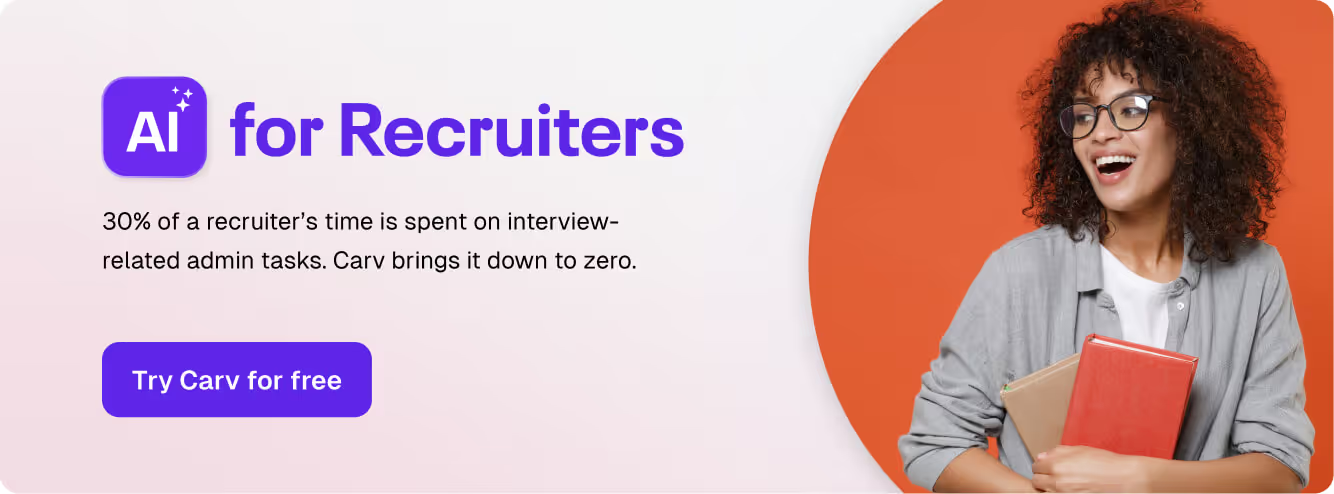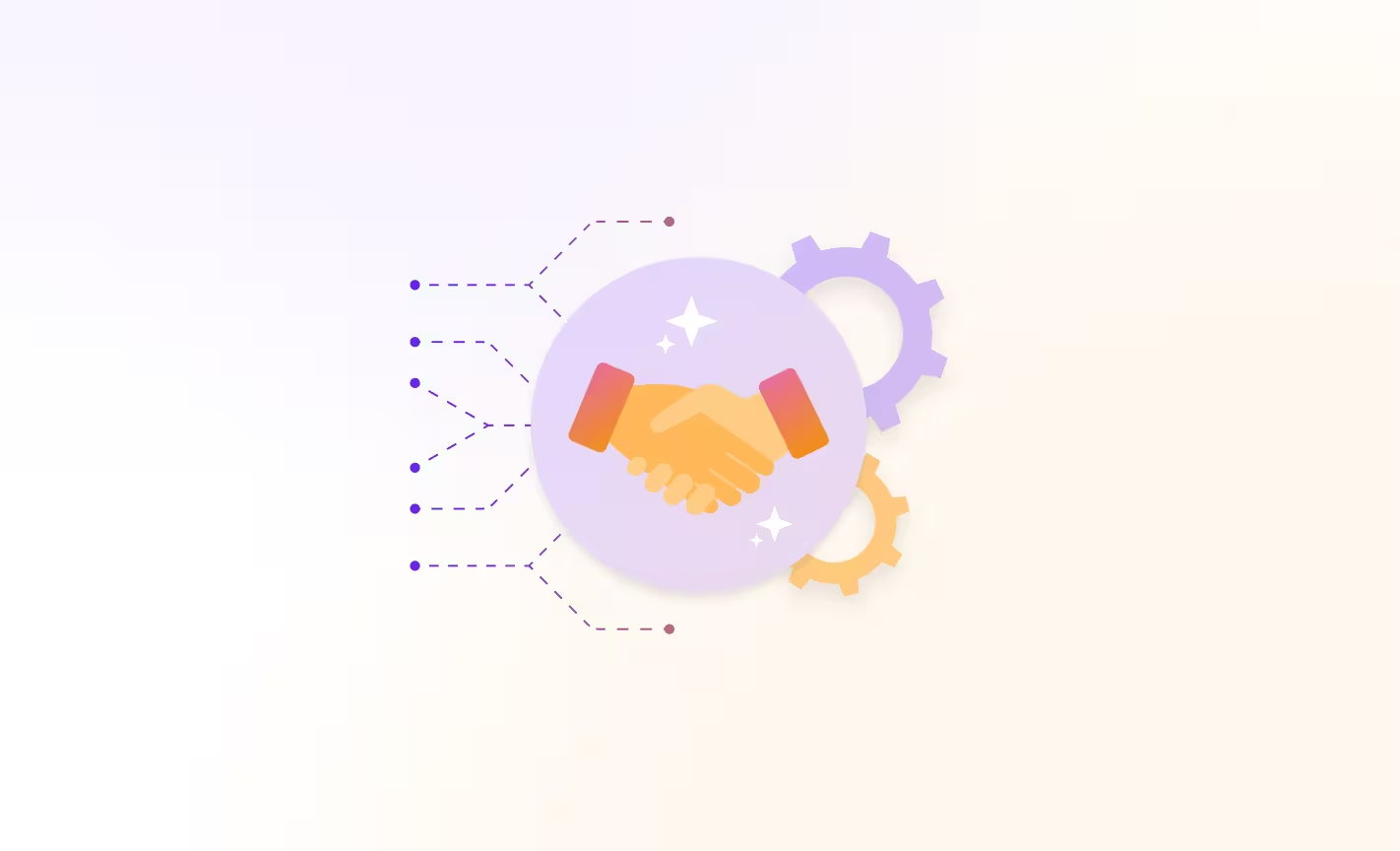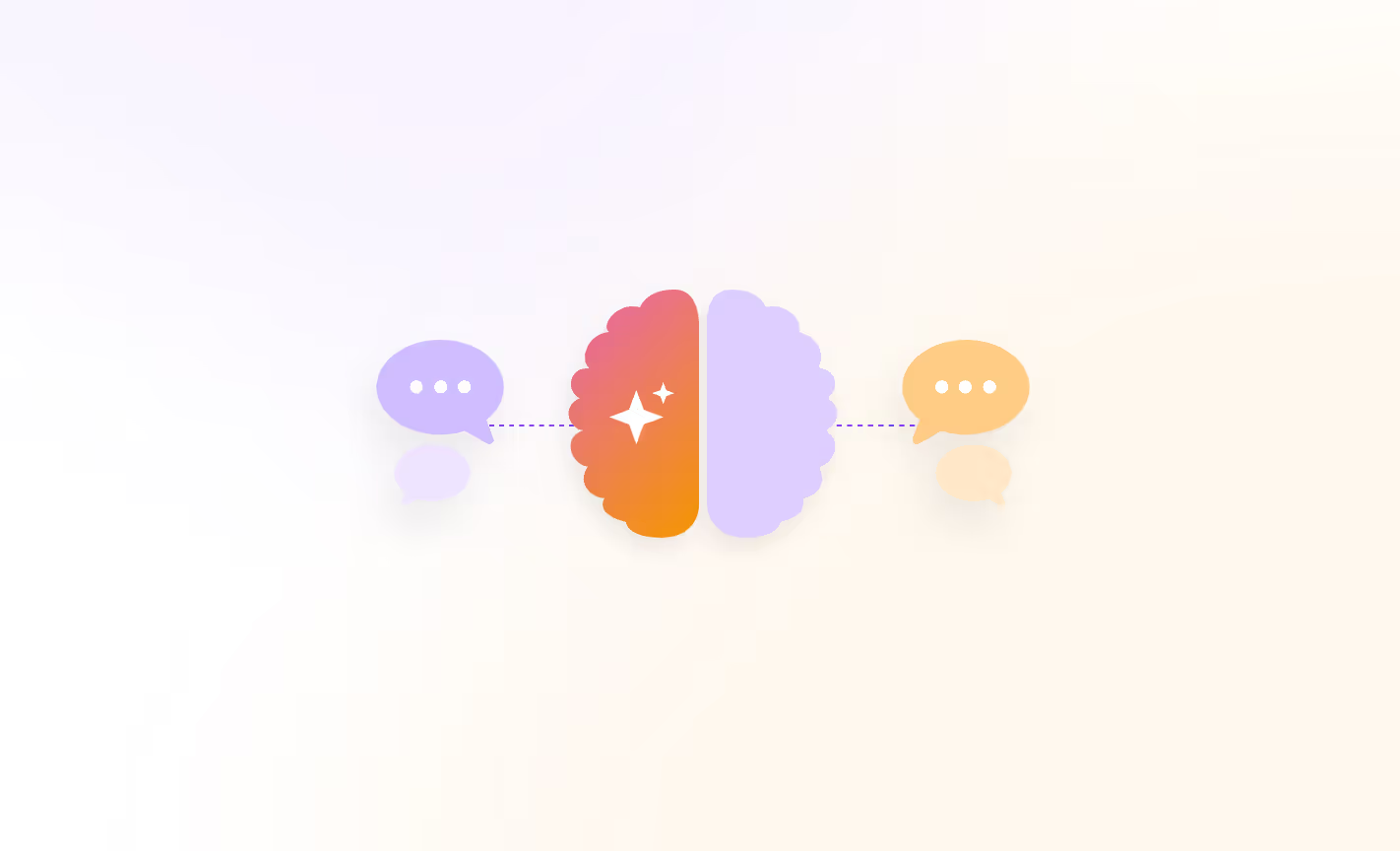Although it’s generally accepted now that AI will change the way we work going forward, the use cases of artificial intelligence across industries are still, at times, obscure.
This applies to recruitment as well. There’s no doubt that generative AI technology will fundamentally reshape how recruiters operate. But the AI implementation playbook isn’t written yet, and the possibilities are broad.
To bring you up to speed though, in this article we will look at the recruitment process without AI, how artificial intelligence is changing the game, and the six main uses of AI in recruitment that we believe will transform the way we hire in 2025 and beyond.
Let’s dive in.
The hiring process without AI
If we think about where most of the problems within recruitment come from - it’s the fact that recruiting teams spend a good 20 to 30% of their time on administrative tasks, most of which could be fully automated using AI and a proper tech stack that enables seamless data transfers between tools.
To give just some examples:
- Posting job openings can take 20-30 minutes per job,
- Screening candidates - checking resumes and doing background checks - can take 20-30 minutes per applicant,
- Interviewing the candidate can take 20-60 minutes per applicant,
- Debriefing the interview and creating an applicant profile can take 20-40 minutes per applicant,
- Creating the job offer can take another 15-30 minutes per applicant, and so on.

Of all these, the only steps that truly require a human touch are the interviews.
But in the reality of most companies and recruitment firms, recruiters spend most of their time on admin tasks like the ones mentioned above, leaving them with little time for relationship-building with candidates. This is why the candidate experience is often suboptimal and the time to hire so long. It’s also one of the top reasons for candidates to drop off mid-process.
This has to do with the way that the recruitment process is structured, and with how most recruitment tools on the market are built.
The structure of a traditional recruitment process
The current hiring process is a sequence of steps that recruiters go through, one after the other, in an attempt to find quality candidates, collect information about them, and distribute it to various systems and teams, so they can make a final hiring decision.
From writing job descriptions and searching through talent pools to source candidates, to reviewing resumes and applications, scheduling interviews with potential candidates, or sending follow-up emails to candidates and stakeholders, these administrative tasks can be overwhelming for recruiters.
Generative AI serves as a game-changer, as it takes the focus away from the sequence of process steps and moves it back to the candidate. It does this by taking over all the admin tasks and executing on them, one by one, in the background, 24/7.
How is this possible?
Transforming unstructured information into structured data
In the recruitment process, interviews are the main source of data. The conversations with candidates are what drives the process, and what feeds the ATS and other hiring systems.
But interviews consist of what we call "unstructured data". Whether it’s a phone screen, candidate interview, or the communication with hiring managers, all the talking and note taking that takes place during hiring results in unstructured data. On top of this, the admin work in between interviews consists of taking in this unstructured data and giving it a form that can be “understood” by machines.
Unlike resumes, which can be scanned and evaluated using machine learning algorithms, interviews can’t be deconstructed in the same manner. Or not without AI.

With AI, the translation of unstructured data to structured data can be done automatically, by a generative AI engine - without any human intervention.
This new way of doing things that has the potential to eliminate all admin work from the hiring process and as a result, save countless hours of a recruiter’s time. Hours that can be used to really focus on the candidate, and finally put an end to long drawn out processes and terrible candidate experiences.

With contextually-enriched AI tools and the right checks and balances in place, you can remove most of the repetitive tasks from their day-to-day work, focusing on things that require human attention:
- Connecting with potential candidates,
- Building relationships,
- Improving the overall hiring experience,
- Getting the right candidates in for better retention, and
- Keeping stakeholders informed and happy.
And this is not something that is far out and will take years to become "real". It is happening at forward thinking companies all over the world, right now.
Companies that are implementing AI within their process are pulling ahead of those that don’t. For this reason, we believe now is the right time for companies to close the AI adoption gap and start benefitting from the incredible capabilities of gen-AI technology.
To help you get started, let’s look at some of the tangible use cases for generative AI in recruitment.
How is generative AI used in recruitment? Main use cases
Unlike traditional automation, based on machine learning technology and algorithms that require structured data, gen-AI systems can work with unstructured data to automate all the time-consuming steps in the recruitment process that used to require human intervention.
1. Sourcing from talent pools
AI-powered tools can continuously scan talent pools to source candidates who fit open vacancies. At the same time, in recruitment agencies, AI technology can help recruiters scan customer job boards to see if they have candidates that fit those vacancies in the pipeline.
On top of this, AI tools and can help hiring teams determine what type of candidate they’re looking for, based on skill sets, experience, and fit with the company culture. All these can be achieved with a few clicks, with contextually-enriched recruitment AI that focuses on finding the best candidates for a specific vacancy and company.
2. Creating personalized job descriptions
The creation of personalized and compelling job descriptions is an important aspect of every hiring cycle, and often demands significant time and effort from a recruiter - especially if you want the job description to be on-brand, and taking into account the Ideal Candidate Profile for the job.
With generative AI, it’s possible to generate tailored, on-brand job descriptions with the click of a button. All you have to do is correctly pre-train your Gen-AI, or contextually enrich it with a tone-of-voice, employer brand materials, and a few example job descriptions - and you can generate a new variant in seconds by feeding it the job requirements.
And not only that. An AI recruiting assistant can automatically disseminate job postings across various job boards and social media platforms like LinkedIn, ensuring a wider reach and increasing the chances of discovering top talent effectively.

3. Resume screening and shortlisting
Navigating the stream of resumes in the recruitment process can be a formidable task, often characterized by challenges in screening and shortlisting candidates efficiently.
Generative AI can address this traditional hurdle by sourcing candidates in the background, 24/7. Unlike humans, AI has infinite execution power and can go through job applicants and screen resumes, read cover letters, and compare job seekers’ skills and profiles until finding the best candidates.

The technology's capacity to rapidly analyze and comprehend large volumes of data enables a more streamlined and objective screening process, significantly reducing the time and effort required for finding and shortlisting potential new hires. Moreover, it introduces a level of consistency and impartiality, mitigating the impact of unconscious biases that might influence human decision-making.
This automated approach not only accelerates the initial stages of recruitment, but also enhances the accuracy of shortlisting, ensuring that only the most qualified candidates progress in the hiring process.
4. Interview preparation and follow-up
Effectively managing a multitude of interviews and quantifying assessments poses a considerable challenge for recruiting teams. Also here, generative AI steps in as a valuable asset in enhancing this part of the hiring process.
The technology can play a pivotal role in scheduling and managing interviews seamlessly. By analyzing the availability of both candidates and interviewers in real time, generative AI can optimize the scheduling process, reducing the logistical complexities that often accompany interview coordination.
Furthermore, AI tools - through their natural language processing functionality - can facilitate automated note taking during video interviews, removing human bias and freeing up recruiters so they can focus on what matters the most: The candidate.
By taking over this task, gen-AI helps recruiters, hiring managers, and HR teams alike, as it allows them to always go back to the interview data to review it and ask follow-up questions. And the best part is that it can all be done asynchronously.
.avif)
This streamlines the evaluation of candidate qualifications and compatibility with the job role, expedites the decision-making process while ensuring a standardized and objective evaluation, and contributes to a better quality of hire by removing bias and refocusing the process on the candidate.
The incorporation of generative AI in the interview process transforms it into a more efficient, data-driven, and candidate-friendly application process. Recruiters can focus on the strategic aspects of candidate evaluation, while AI is handling the logistical details with precision and objectivity.
5. Automated candidate profile creation
One of the most compelling single purpose use cases for AI in recruitment currently is the fully automated creation of candidate profiles, based on unstructured data.
Imagine you have an interview with a candidate, and you ask your questions - instead of simultaneously taking notes and filling in the fields in your ATS later, an AI can register what is said and draft a full candidate profile based on the transcript of the conversation.
With the right integration, this information can be sent straight to your applicant tracking system, saving you the first chunk of admin work. This not only enhances efficiency and accuracy, but also ensures a better candidate experience, as you can focus on the candidate during the interview, and expedite the follow-up steps afterwards.

6. Updating the ATS and following up with stakeholders
Finally, AI recruitment software can communicate with both systems and stakeholders infinitely, reducing the amount of follow-up that recruiters have to do after interviews. This includes updating the ATS and keeping recruitment data clean and organized.
Communication is the lifeblood of the recruitment process, involving constant interaction with candidates, hiring managers, and various stakeholders. Stakeholder communication, which includes follow-up emails and updates, can be a time-intensive task. Generative AI offers a solution by enabling the automation of these communications - again, 24/7, across languages and geographies.
With the ability to understand and derive context from the contents of meetings and interactions, generative AI can craft personalized follow-up emails that resonate with the nuances of each conversation. In essence, generative AI in stakeholder communication becomes a valuable assistant, freeing up valuable time and enhancing the overall effectiveness of the recruitment workflow.
The next frontier: Custom built AI for your hiring process
The transformative potential outlined in the various use cases of generative AI in recruitment is not a vision of the future; it is a reality being embraced by companies globally. Organizations are already leveraging generic generative AI solutions to enhance and streamline their recruitment processes.
The next frontier lies in tailoring this technology to the specific needs and intricacies of individual businesses. Implementing an AI engine into your recruitment process offers the opportunity to customize automation, aligning it seamlessly with the unique operational nuances of your company.
The era of one-size-fits-all solutions is evolving into a landscape where businesses can integrate AI technologies that not only automate mundane tasks but do so in a way that reflects the ethos and workflows of the organization.
As companies continue to recognize the value of generative AI in recruitment, the focus shifts toward strategic implementation, ensuring that the AI engine becomes an integral and personalized component of the recruitment arsenal, maximizing efficiency, and contributing to the overall success of the talent acquisition process.
We covered the topic of AI's impact on the recruitment tech stack in the video below.
Over to you
Although the AI adoption speed and the implementation playbook might change in the coming months, what’s clear is that the future of recruitment is undeniably intertwined with the capabilities of generative AI. The use cases explored above prove the tangible benefits that organizations worldwide are already harnessing. And the key lies not just in recognizing the potential of generative AI but in embracing its adaptability.
Companies that embark on the journey of integrating AI hiring software tailored to their unique operations are poised to redefine efficiency in recruitment and improve it for all stakeholders involved. And that is something that is definitely needed.



.avif)




